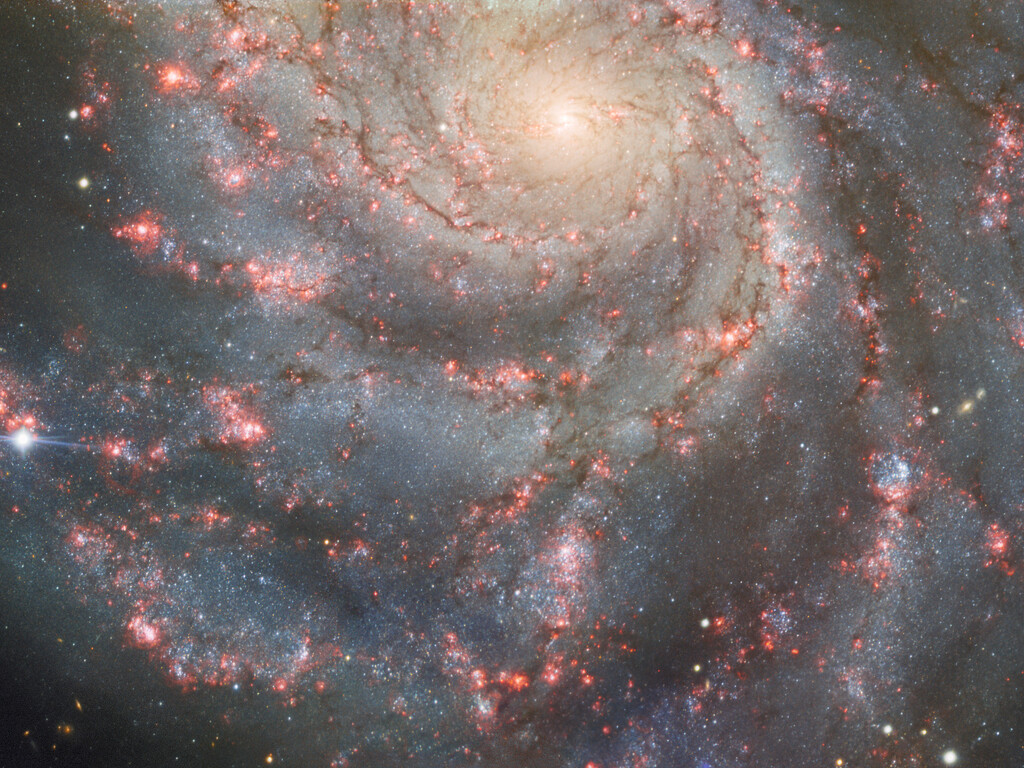Gemini North telescope captures closest supernova in five years following mirror repair
Gemini North telescope opens its eyes for the first time in seven months.

After a seven-month hiatus, the Gemini North telescope has resumed its observation of the night sky after a successful repair and refurbishment of its 8-meter primary mirror. The telescope's first observation since the repair captured a dazzling image of a newly-discovered supernova named SN 2023ixf.
SN 2023ixf was discovered on May 19 by Japanese astronomer Koichi Itagaki. It is the closest supernova seen in the past five years and is located in the spiral arms of the Pinwheel Galaxy (Messier 101). In the months to come, Gemini North will enable astronomers to investigate the supernova's fading light and evolving spectrum, providing valuable insights into the physics of such celestial explosions.
"The successful repair of the Gemini North mirror was a great team effort for NOIRLab and our contractors at Safran–Reosc. Many different groups across NOIRLab worked together to resolve this difficult situation," International Gemini Observatory Director Jennifer Lotz said in a statement.
The Gemini North telescope, Gemini North, part of the International Gemini Observatory operated by NSF’s NOIRLab, suffered damage in late 2022, limited to a small area outside the light-collecting region. The repair process lasted approximately seven months, culminating in the mirror being recoated and reinstalled in May 2023, followed by the testing of control systems. The stunning image of Messier 101 and SN 2023ixf serves as a testament to the successful repair of the telescope's primary mirror.
Gemini North possesses exceptional observational capabilities, which make it a powerful instrument for astronomical discoveries. Furthermore, its location on Maunakea in Hawai‘i provides an optimal vantage point in the northern hemisphere, offering an unparalleled view of Messier 101.
The Pinwheel Galaxy, located about 21 million light-years away in the Ursa Major constellation, is known for its captivating appearance and has been a popular subject for astrophotography. Its face-on orientation towards Earth grants observers a pristine view of its expansive diameter, spanning approximately 170,000 light-years, and allows them to marvel at its nearly one trillion stars. The galaxy's swirling spiral arms are adorned with vast regions of star-forming nebulae, recognizable by their glowing pink illumination. Additionally, the galaxy is populated by young, hot, blue stars, interspersed with dark dust lanes that play a crucial role in fueling the formation of newborn stars.
This new view of Messier 101 and SN 2023ixf, processed using the DRAGONS software system, reveals the supernova as a remarkably bright blue star nestled within one of the galaxy's spiral arms. Follow-up observations conducted by both amateur and professional astronomers have determined that SN 2023ixf is a Type II supernova. A Type II supernova occurs when a massive star, ranging from 8 to 50 times the mass of the Sun, depletes its nuclear fuel, resulting in a collapse
SN 2023ixf's discovery marks the closest supernova observed in the past five years and the second supernova event witnessed in Messier 101 within the last 15 years, following a Type I supernova observed in 2011.










